- Jun 29, 2021
Catch More Bass from Summer Vegetation
Learn the best baits and presentations for calling bass from different types of vegetation.
Green vegetation in bass waters creates habitat-rich environments, which creates a common problem for bass fishermen: It all looks fishy. Rather than being overwhelmed by all the visible possibilities, anglers do well to learn to identify those areas with the highest probability of producing bass. Part of the solution is learning to accurately cast the appropriate lures to the vegetation that is most apt to produce a strike.
There are four major types of aquatic vegetation: floating, submerged, emergent and algae. Let’s look at several specific varieties and examine how to go about fishing them.
Hyacinth
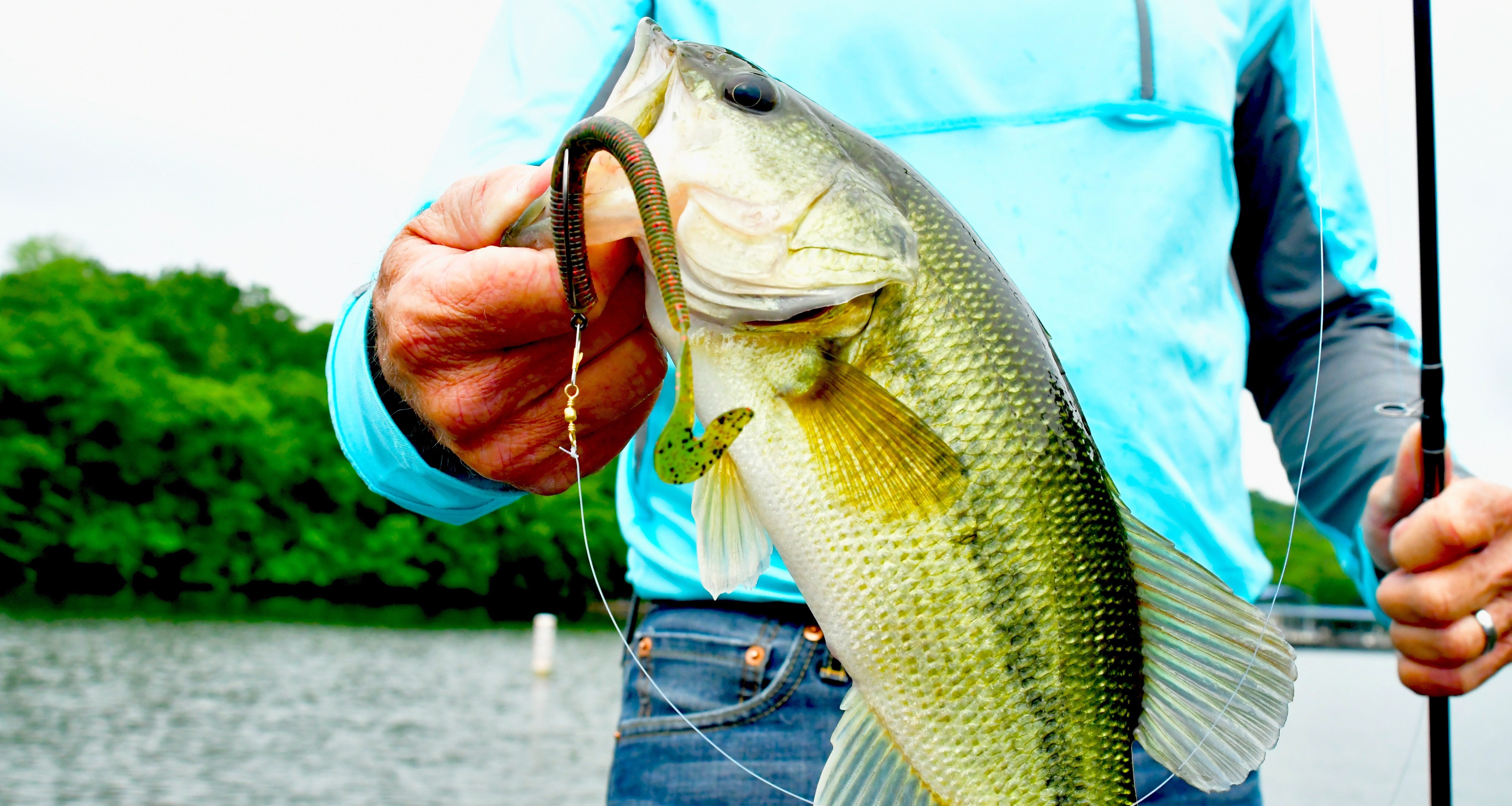

This invasive species grows in thick rafts that are free-floating with no roots for anchors. This phenomenon makes it easy to predict where to find hyacinth in lakes where it exists. Simply consider prevailing winds. If the wind is blowing from the east, you will find this fish-attracting vegetation against west banks.
Hyacinth provides excellent habitat in areas with minimal subsurface structure. Hyacinth mats provide an open space and broad shadow beneath the canopy. As a result, hyacinth mats often attract some of the bigger bass in a lake, simply because the mats create a blanket of vegetation over the fish. Also, a clean bottom gives bass the advantage of being able to easily see in all directions. A simple flip of their tail pushes them several feet through the water column to attack and eat a bait.
The YUM Thump’N Dinger is especially effective in hyacinth beds. Cast it into the bed and slowly work it through the vegetation. Marauding bass are alerted to the noisy action. It’s not uncommon for bass to crash through the mat to attack the noise-making worm. However, more strikes will come by allowing the worm to tumble through any holes in the mats or by tumbling the worm over the edge of the mat, therefore taking full advantage of the thump of the worm’s tail as it plummets toward the bottom. If a bass doesn’t hit the bait on the drop, slowly swim the bait back to the surface. Strikes often come as the bait is about to enter the vegetation once again.
Hydrilla
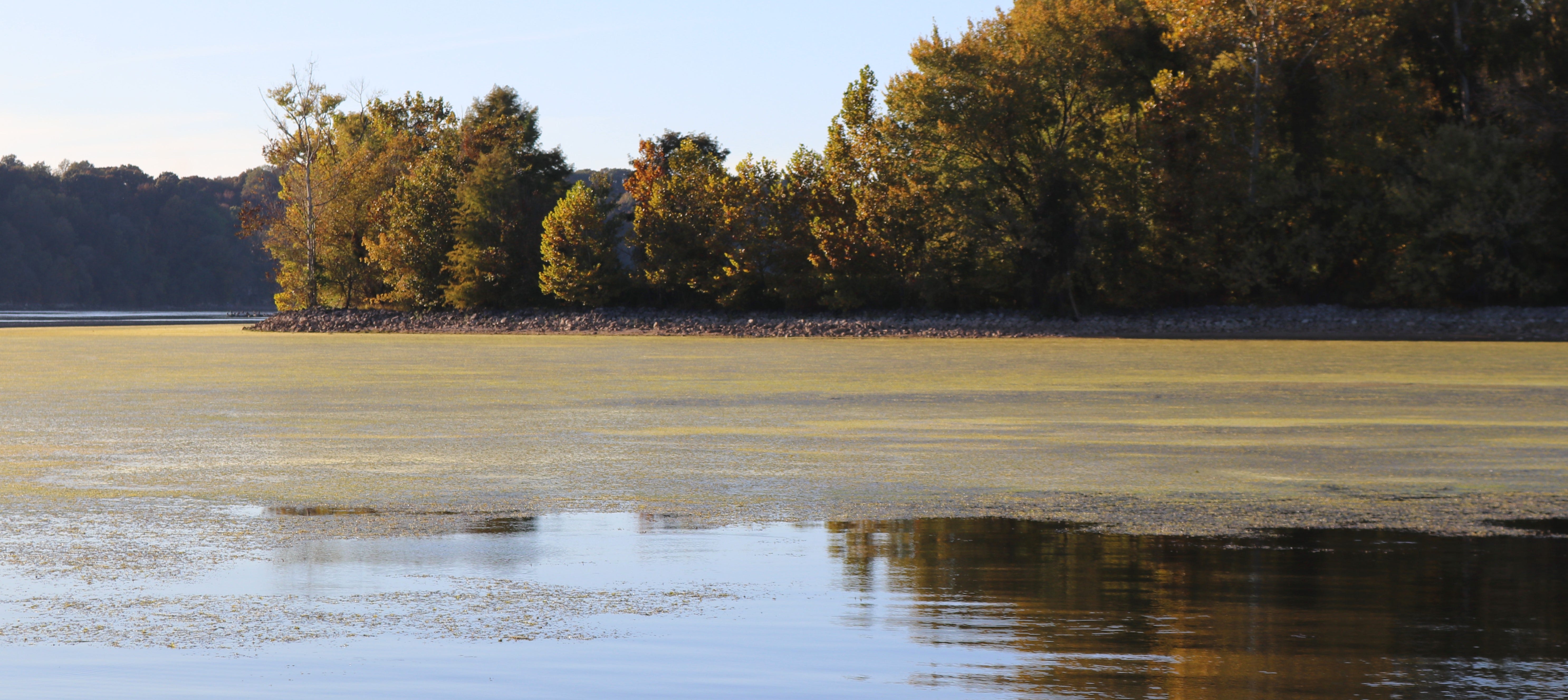

Hydrilla is another invasive species and is commonly hated by lake managers. Throughout the Southern United States, this rooted emergent plant is a bass magnet that seldom disappoints bass anglers. It can grow in marginal areas where water and land meet, or out in open water where the bottom is sufficiently shallow for light penetration. Much of the plant mass will be out of the water. Hydrilla helps keep the bank from eroding from strong winds and wave action and captures sediment before it reaches the main body, often preventing a lake from becoming turbid.
If you are fishing a new lake and don’t have a clue where to start, look for hydrilla. If hydrilla is present, bass will be, too.
When hydrilla grows to the surface is when the fun starts. Big fish often move into the thick mats, staging themselves around ambush points. Noise makers are a surefire bet for explosive strikes around these mats. The YUM Tip Toad rigged on a heavy-duty hook is a perfect bait for these presentations. Cast across the mat into open water if possible. The resounding splash of the bait touching down may be all it takes for a bass hanging at the edge of the mat to attack. If the strike doesn’t come, rip the frog across the mat making as much noise as possible. Repeat the process across the entire surface of the mat. If you miss a strike, cast back to the same spot and try again. Bass will often strike a dozen times or more before being hooked.
Lily Pads
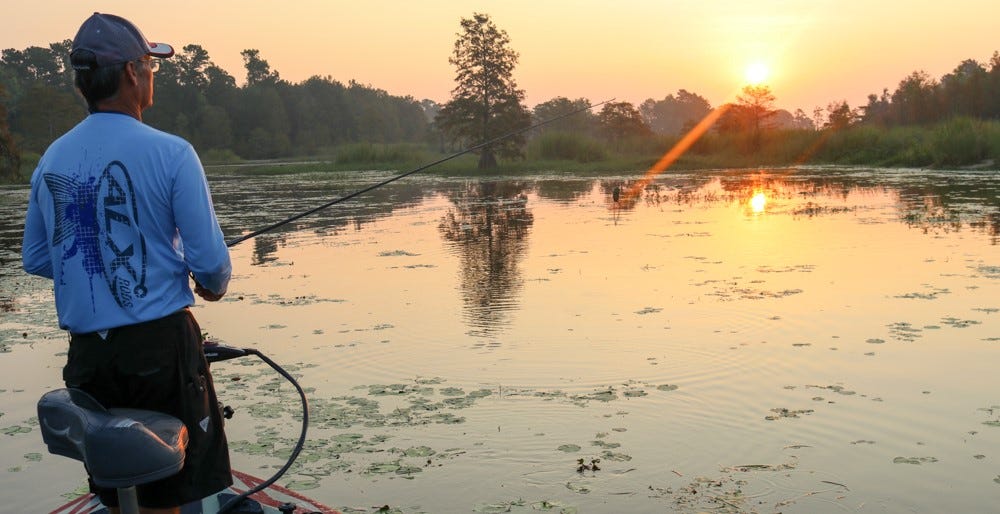

Lily pads are a prime example of emergent vegetation and wreak with bass-attracting qualities. This long-stemmed plant with the basketball-sized, shiny green, flat pads on the surface often grows in fields covering several acres. It also grows extensively in most areas of the country and offers bass a multitude of benefits.
As lily pads green up with warmer weather, they offer bass great habitat for the pre spawn, spawn and post spawn. The bases of the stems provide bass a hard spot to spawn on, while the broad leaves or pads are heavily used for shade and ambush points.
Fishing lily pads is as fun as it gets in the world of bass fishing. Missouri bass fisherman Hunter Hindman of Living the Dream Outdoor Properties sees a lot of prime bass fishing lakes across the Midwest. “I gravitate to lily pads in the summertime,” Hindman said. “You can fish so many types of lures among the pads – from big worms to jig-n-pigs, YUM Dingers, and War Eagle buzzbaits, and BOOYAH ToadRunners for exciting topwater action. Work the cover thoroughly because a big bass could be lurking under any pad out there.”
Coontail & Pondweed
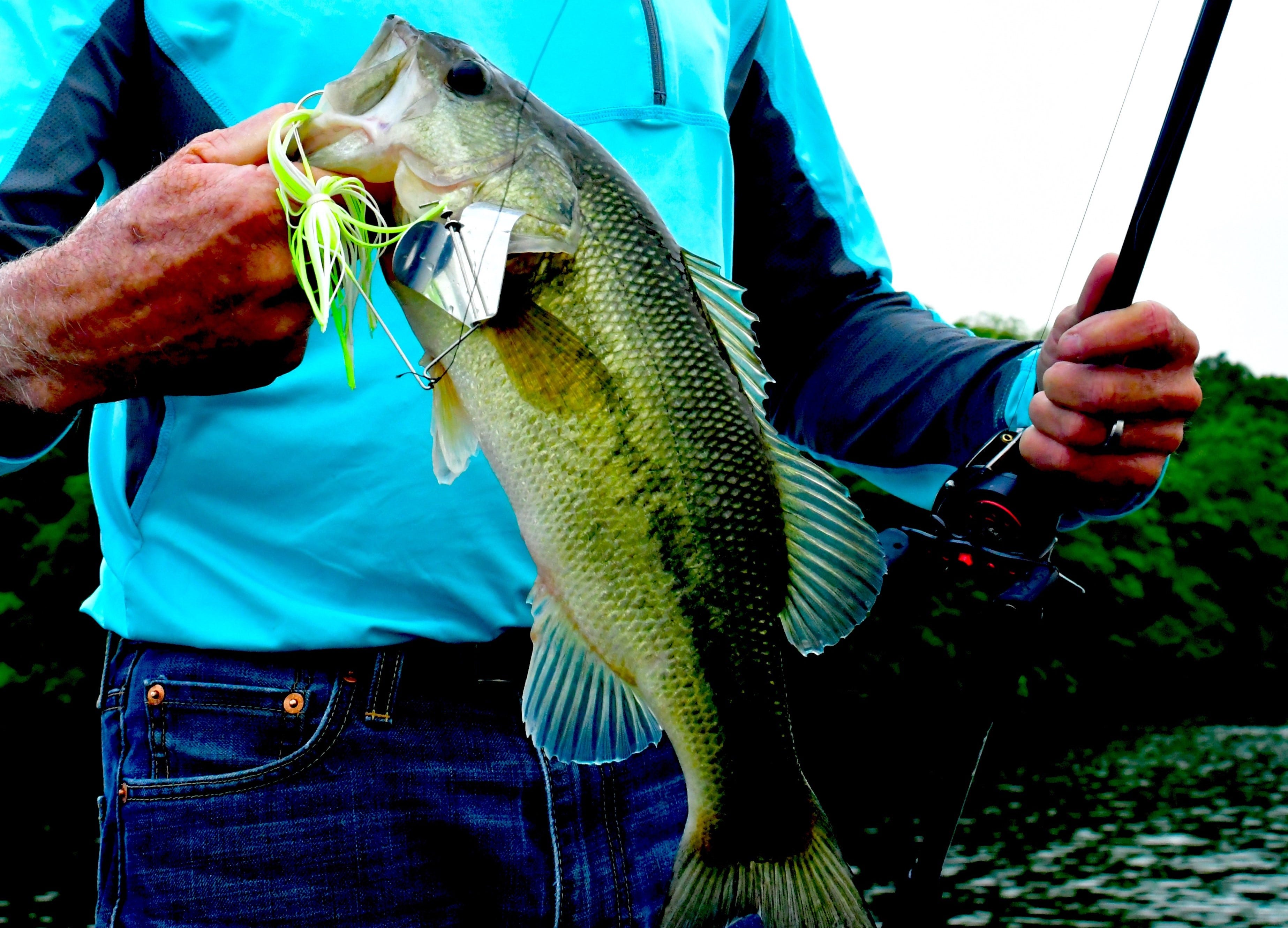

These two common varieties of aquatic vegetation fall into the submerged class. The bulk of their mass is submerged and grows below the surface of the water. These plants provide excellent habitat for fry and juvenile fish to evade predation. Aquatic macro invertebrates also feed on these plants, which provides an important food source for the bass. This type of vegetation provides high quality fish habitat, but too much of it in an area can lead to low oxygen levels and even fish kills.
Submerged vegetation like coontail and pondweed often reaches the surface and can provide excellent bass fishing any time of the year. While emergent grass provides great bass fishing during spring and summer, submerged grass and weed beds produce bass every month of the year. During the spawn, when bass flood the banks to make nests, submerged weed beds and grass hold other fish waiting to spawn and more fish yet that have finished spawning and retreated to the weeds to recuperate.
The great thing about submerged vegetation is that it also may have leaves that reach the surface, offering the bass fisherman the best of both worlds. A wide variety of baits may be fished around, through and on top of this type of vegetation.
Throwing a War Eagle spinnerbait or buzzbait is a great way to prospect these areas. A spinnerbait can be fished with a classic subsurface moderate presentation, but as vegetation thickens, try buzzing the spinnerbait at the surface. Once the prospecting is complete, come back through the area with a War Eagle Buzzbait to rev up the topwater action. Of course, the BOOYAH ToadRunner is an excellent frog pattern to throw into these broken areas where submerged vegetation has reached the surface. The BOOYAH Poppin Pad Crasher and BOOYAH Pad Crasher frogs are also good producers around submerged weed beds, particularly if any broken mats of surface weeds remain.
Algae
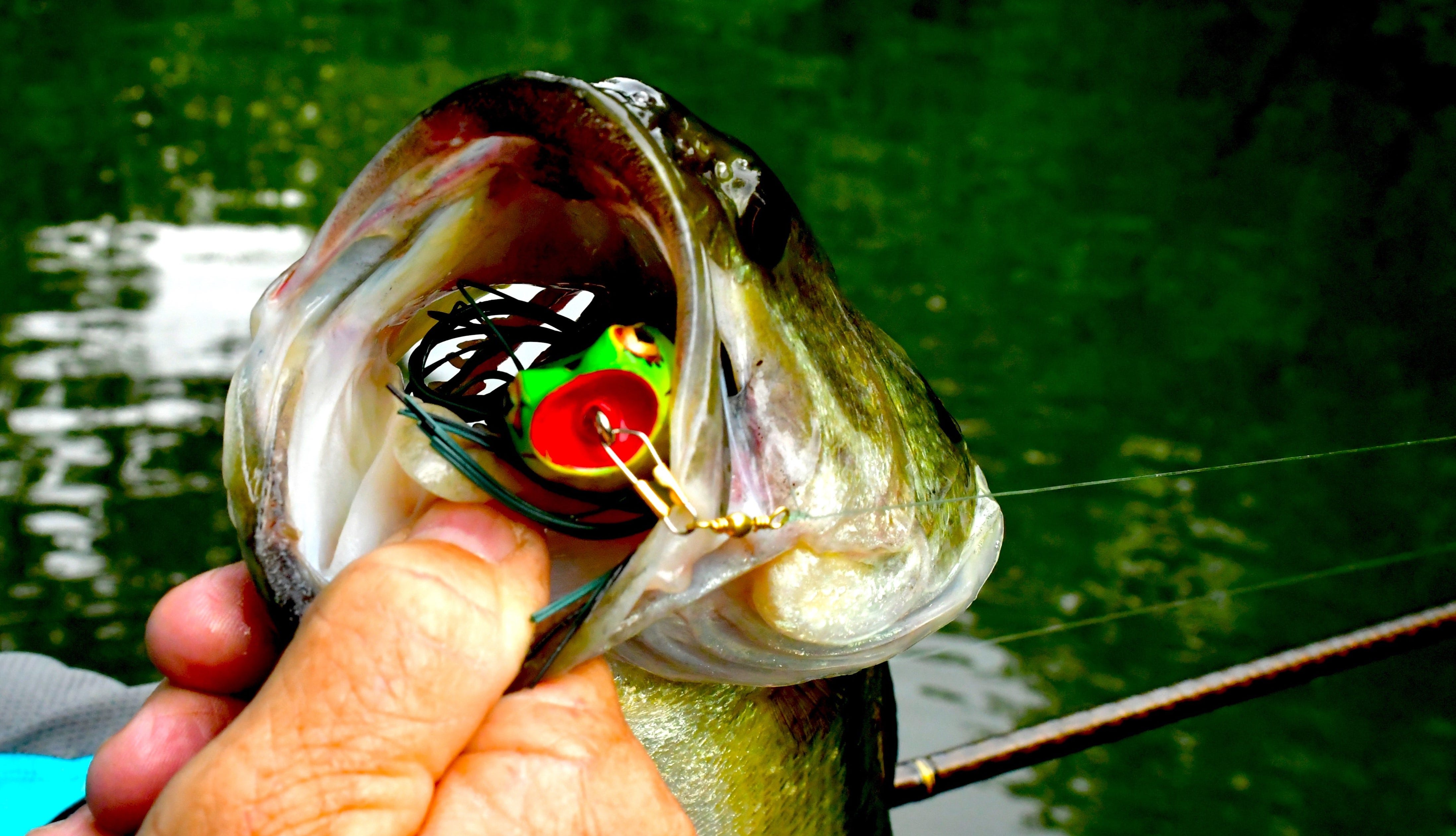

Bass fishermen often shudder at the thought of algae. Most are familiar with filamentous algae – the stringy, slimy stuff that fouls the blades on spinnerbaits and buzzbaits. Although algae can be annoying, algae blooms are a part of summer fishing that cannot be avoided. Adapting your fishing techniques will help you survive the bloom and catch fish. A simple tactic shift is to change from natural colors to bright colors for moving baits or switching from natural tones to dark colors for slow moving baits. Great baits to throw when the algae blooms hit are the YUM Thump’N Dinger for subsurface applications and the BOOYAH ToadRunner on top.
Gear for Frog Fishing
Frog fishing for bass is quite different from other methods of bass fishing. The most common reel gear ratio for frog fishing among bass fishermen is 7.5:1 to 8.0:1. It is very important to get a reel with a high-speed retrieve rate. You will need to pick up your slack as fast as possible when a bass strikes your bait to get an effective hookset.
Frog fishing is normally done on heavy baitcasting gear due to the dense cover. Rod size and action are a matter of personal choice, but most anglers prefer heavy rods between 7 and 7 ½ feet. Some anglers prefer a medium-heavy rod, which allows them to better work a bait from side-to-side. However, a lighter rod means less power for fighting a big bass in heavy cover.
Braided line is almost a must for frog fishing, because of the heavy-duty conditions where frog fishing takes place. It is not uncommon for bass to become entangled in masses of grass, or other vegetation. Fifty to 65-pound braided line will do the trick under the harshest of conditions.
Don’t be the guy that goes from hero to zero, because of improper equipment when froggin’.



